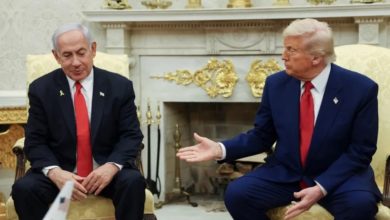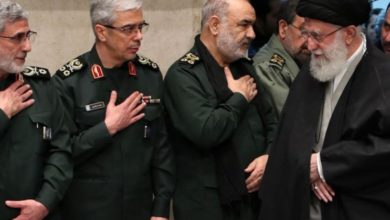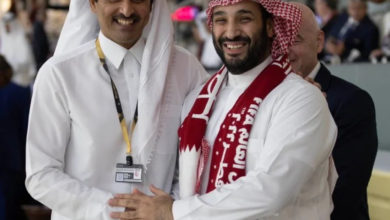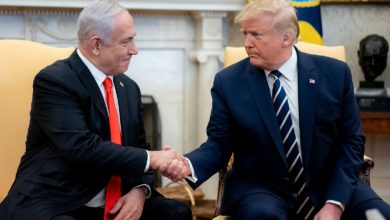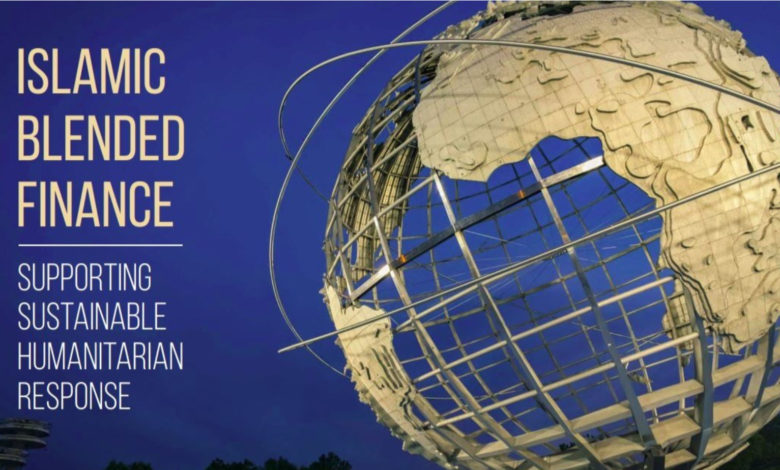
On December 5, 2024, in Geneva, Médecins Sans Frontières (MSF) Switzerland and the Global Donors Forum (GDF) hosted an exclusive workshop dedicated to integrating Islamic blended finance into humanitarian strategies. The event aimed to explore how Islamic financial tools such as takaful, zakat, waqf, and sukuk can provide ethical and sustainable solutions to address global crises. Bringing together philanthropists, Islamic finance experts, and humanitarian leaders, the workshop highlighted innovative approaches to diversify funding sources, maximize the impact of donations, and enhance the sustainability of humanitarian projects.
Focused on exchange and collaboration, the workshop provided participants with an opportunity to understand the potential of Islamic financial models to amplify humanitarian efforts while aligning ethical principles with the strategic objectives of donors and organizations. This report presents a summary of the solutions explored and the perspectives identified for integrating these tools into humanitarian initiatives.
- Takaful – A tool for humanitarian aid
Introduced by Miguel Solana, the IRFF inclusive assurance specialist at the United Nations Development Programme (UNDP) , Takaful (التكافل), a mutual insurance model compliant with Sharia (الشَّرِيعَة) principles, represents an innovative and ethical response to growing humanitarian and climate challenges, particularly in vulnerable Muslim communities. Based on principles of shared responsibility, equity, and communal solidarity, Takaful avoids practices prohibited under Sharia, such as interest (al-riba – الربا) and excessive speculation (gharar – غرر). Participants contribute to a common fund designed to cover losses, fostering not only financial protection but also stronger social bonds within communities.
This model is promoted by the UNDP to enhance the resilience of populations in the face of crises. The UNDP plays a central role in advancing Takaful by integrating it into its efforts to achieve the Sustainable Development Goals (SDGs) outlined in the 2030 Agenda. To do so, it works across six signature solutions addressing poverty and inequality, governance, resilience, environment, energy, and gender equality. To meet the specific needs of countries, the UNDP leverages transformative tools such as digitalization, strategic innovation, and development financing. By incorporating these tools into its interventions, the UNDP delivers systemic development solutions focused on structural transformations while committing to leaving no one behind and strengthening community resilience.
Muslim communities, often located in regions highly exposed to natural disasters and socio-economic crises, are among the most vulnerable to the impacts of climate change. Of the 30 countries most affected by this phenomenon, more than half have a majority Muslim population. However, in these countries, access to financial protection remains limited, with insurance penetration rates below 2% in many cases. This low rate is largely due to cultural and religious constraints that render conventional insurance incompatible with Islamic principles.
By offering a Sharia-compliant alternative, Takaful addresses these constraints while providing an ethical and sustainable solution. Although growing—with gross contributions reaching USD 30 billion in 2022—it remains relatively marginal compared to the USD 7.1 trillion in conventional insurance premiums.
2.1 The Insurance and Risk Finance Facility (IRFF) approach to building financial resilience
The Insurance and Risk Finance Facility (IRFF) aims to strengthen countries’ capacity to anticipate, manage, and mitigate financial risks associated with economic, climatic, or social crises by utilizing insurance and risk finance mechanisms. The IRFF adopts an integrated and multisectoral approach, working with governments, the private sector, local communities, and international organizations to embed insurance and risk management into development policies.
The initiative focuses on several key areas: improving financial risk management, protecting households, businesses, and farmers through insurance products, enhancing the resilience of ecosystems and communities, and reducing risks associated with investments in food systems and global supply chains.
The IRFF also leverages Takaful to provide culturally adapted solutions for Muslim populations, promoting justice and mutual assistance. Its multisectoral approach revolves around five key domains: food systems, nature, households, businesses, and support for vulnerable countries and communities. By using insurance as a lever, the IRFF fosters carbon-neutral growth and sustainable development, combining financial resilience with environmental objectives.
2.3 The Global Takaful Alliance
The Global Takaful Alliance initiative, led by the UNDP, aims to enhance the financial resilience of 100 million people by 2030 through Takaful. This public-private partnership, focused on improving the financial stability of Muslim communities, is structured around three main pillars.
The first pillar involves establishing a global platform to foster cooperation among various stakeholders in advancing the adoption of Takaful. The second focuses on strengthening regulatory and institutional frameworks to enable governments to adopt and refine their Takaful programs. This includes enhancing legislative environments and institutional capacities to encourage the dissemination and innovation of Takaful solutions. Finally, the third pillar emphasizes the practical implementation of Takaful solutions in partnership with the private sector. The Alliance collaborates with local and international Takaful providers to design and deploy tailored solutions.
To date, significant progress has been achieved, including the formation of four major partnerships—most notably with the Islamic Development Bank (IsDB) and Kuwait Finance House—involving over 70 stakeholders across six countries, organizing four strategic roundtables during key events such as COP28, and publishing two reports in collaboration with the IsDB and its affiliate institute.
This initiative aspires to integrate Takaful as a vital tool for strengthening the resilience of vulnerable communities while respecting their cultural and religious values through international cooperation and innovation.
In conclusion, Takaful offers an ethical and culturally relevant solution for vulnerable (Muslim) communities, particularly amid the growing challenges of climate, economic, and social crises. Initiatives like the « Insurance and Risk Finance Facility (IRFF) » and the « Global Takaful Alliance » underscore the UNDP’s pivotal role in promoting Takaful, leveraging strategic partnerships, and embedding it into a global vision of resilience and sustainability. These efforts highlight the potential of Takaful as an essential tool for supporting sustainable humanitarian responses, bolstering community resilience, and advancing the Sustainable Development Goals.
While Takaful provides a mutual and community-based solution to financial risks, another pillar of Islamic finance, Zakat, plays a crucial role in humanitarian response.
3. Zakat : A tool for humanitarian aid
Zakat (زَكَاة), as presented by Dr. Elnur Salihovic, an expert in Islamic social finance and philanthropy with Doctors Without Borders (DWB/MSF), is one of the five fundamental pillars of Islam. As a religious obligation for Muslims, it holds a central position in Islamic social finance, contributing to purify believers, strengthen their faith, and support the most vulnerable. Together with Sadaqa (صدقة), a voluntary, non-mandatory but encouraged donation, Zakat aims to promote social justice and sustainable development.
Defined in the Quran, Surah At-Tawba (verse 60), Zakat is regarded as the right of the needy over the wealth of the affluent and is designated for eight specific categories of beneficiaries: the poor, the destitute, those tasked with collecting the funds, those whose hearts are to be reconciled (to Islam), slaves seeking emancipation, people in debt, those striving in the path of God, and travelers in distress.
Islam entrusts the authorities in charge, or Ulul Amr, with the responsibility and authority to establish an adequate system for the collection and distribution of Zakat. This entails setting up appropriate systems and ensuring effective oversight to guarantee transparent and fair management. Today, institutionalized Zakat collection represents a significant potential, amounting to as much as USD 30 billion. Thus, this resource serves as a powerful tool to enhance social justice, improve the well-being of vulnerable communities, and promote sustainable development.
There are diverse approaches to the implementation of Zakat worldwide. Firstly, Islamic legal schools (madhhabs – مذاهب), such as Hanafi, Maliki, Shafi’i, Hanbali, or Ja’fari, each offer specific interpretations regarding the calculation, collection, and distribution of Zakat. Secondly, certain countries (e.g., Saudi Arabia, Malaysia, Indonesia, Pakistan, Sudan) have established state-regulated systems where Zakat is governed by national laws and redistribution mechanisms supervised by government agencies. In other contexts, where no specific state legal framework exists, Islamic councils or muftis play a decisive role in defining rules and steering actions related to Zakat. Lastly, in the Global North and in countries where Islam is not the majority religion, Muslims primarily rely on community or charitable organizations and the expertise of religious councils to ensure that Zakat is applied in accordance with Islamic principles.
3.1 Zakat and humanitarian aid
Zakat plays a significant role in funding charitable projects worldwide. Its management and redistribution involve a diverse range of actors, including specialized collection agencies, Islamic organizations active on the international stage, and humanitarian and development NGOs. While Doctors Without Borders (MSF) adopts a passive approach, accepting contributions from Zakat without actively soliciting them, other actors like the UNHCR and Save the Children have implemented specific mechanisms to direct these funds towards their humanitarian programs, enhancing their capacity to address the needs of vulnerable populations. Sadaqah, another form of charity, also holds substantial potential for supporting humanitarian financing.
Optimizing Zakat requires strategic partnerships between Zakat agencies and international NGOs, enabling its efficiency and impact to be maximized. This potential, estimated at $100 billion, remains underutilized despite the rising global humanitarian challenges: poverty, food insecurity affecting 733 million people, armed conflicts, natural disasters, 117 million displaced persons, and 43.5 million refugees. With 60% of crises affecting populations in predominantly Muslim countries, Zakat emerges as a significant resource. However, shortcomings in achieving the Sustainable Development Goals (SDGs), lack of transparency, and insufficient digital transformation hinder effective humanitarian responses.
3.2 MSF Islamic Philanthropy and Finance project
In this context, Doctors Without Borders (MSF) aims to launch its Islamic Philanthropy and Finance Project, an initiative by the OCP Group. Structured around a steering committee, a task force, and a dedicated manager since 2022, the project is based on Sharia-compliant guidelines developed in collaboration with Amanie Advisors. Its objective is to position MSF as a reliable stakeholder within Islamic philanthropy, initially targeting Gulf Cooperation Council (GCC) countries and the Southeast Asia region, before expanding to Western Europe, North America, and Australia.
Potential partnerships include Zakat and Waqf agencies, Muslim humanitarian organizations, Islamic banks and corporations, and global partners such as the Islamic Development Bank (IsDB), the World Zakat and Waqf Foundation, and the Global Donors Forum.
The Global Muslim Philanthropy Fund for Children, a joint initiative by UNICEF and the Islamic Development Bank (IsDB), demonstrates another approach to mobilizing philanthropic resources. Established in 2019, the fund seeks to harness Islamic philanthropy to benefit children. It operates through partnerships between the public and private sectors, with its main donors being the King Salman Center for Relief and the Abdulaziz Al Ghurair Foundation (AGFE). To ensure strict compliance with Islamic finance principles, the fund is supervised by the Sharia Council of the Islamic Development Bank.
If Zakat addresses immediate needs, Sukuk, or Islamic bonds, enable the financing of large-scale projects while adhering to Sharia principles. Let’s explore how they can be utilized in a humanitarian context.
4. Sukuk & humanitarian aid
Presented by Florian Kemmerich, an expert in impact investments, capital advisory, and innovative financing solutions at KOIS Finance, the company stands out for its commitment to transforming high-impact projects into investment opportunities while generating financial returns and positive outcomes for society and the environment. Managing $500 million in assets, KOIS invigorates the impact investment market, develops innovative solutions in collaboration with leading organizations such as Boehringer Ingelheim, Plan International, UNICEF, USAID, Shell Foundation, and many others, and structures financial products in underexplored sub-sectors, mobilizing $120 million through blended finance instruments.
The company focuses its efforts on several critical sectors for sustainable development: health, by improving access to care; livelihoods, by facilitating access to education and employment; climate, through initiatives supporting environmental protection; gender equality, by promoting women’s empowerment; and humanitarian efforts, by fostering peace and justice in fragile contexts.
4.1 What is « sukuk » ?
Sukuk (صكوك), or Islamic bonds, are financial instruments that comply with Sharia law, designed to offer an ethical and Sharia-aligned alternative to traditional bonds. Unlike conventional financial systems that rely on interest (al-riba), Sukuk are based on tangible assets or specific projects, ensuring their compliance with the principles of Islamic finance.
Instead of lending money, Sukuk represent indirect ownership of real assets, generating income similar to dividends while adhering to Sharia rules on profit-sharing. Their uniqueness lies in their enhanced transparency and security, thanks to their asset-backed structure, which helps reduce risks for investors.
The functioning of Sukuk can be illustrated with a simple example. An entity, known as the Originator (often a company or government), sells an asset to a special purpose vehicle (SPV), which acts as an intermediary. The SPV then issues Sukuk certificates to investors, thereby raising funds. The asset sold is leased back to the Originator, who makes regular rental payments to the SPV. These rental payments are then distributed to investors as income. At the end of the Sukuk period, the Originator repurchases the asset, and the investors recover their initial capital.
This model is particularly useful for financing concrete projects, such as essential infrastructure, as it combines financial returns, investor security, and adherence to ethical values.
4.2 Sukuk and Blended Finance: Tackling global challenges
When integrated into blended finance, Sukuk offer a powerful solution to address the challenges posed by conflicts, climate change, and population displacement.
In 2022, approximately 1.9 billion people were living in such environments, representing 73% of those in extreme poverty. Projections suggest that by 2030, up to 86% of the world’s poorest populations could reside in these areas. In this context, coupled with a decline in traditional grant funding (-8% in 2022) and an increase in loan-based aid (+11%, approximately USD 61 billion), Sukuk introduce a new dynamic. They help bridge the financial gap by catalyzing more funds to meet growing humanitarian needs and compensate for the reduction in public aid. Sukuk also adjust the risk-return profile to attract private investment into high-risk, underfunded contexts while offering sustainable and scalable solutions that go beyond emergency responses.
Sukuk integrate particularly well into this blended finance model. Their structure makes them suitable for financing sustainable infrastructure, which is crucial in fragile contexts. They also foster effective collaboration among public, private, and philanthropic sectors, enabling collective efforts to achieve development goals. Moreover, through their flexibility via special purpose vehicles (SPVs), Sukuk offer customizable mechanisms to blend various types of financing while managing risks effectively.
Thus, the combination of blended finance and Sukuk represents an innovative response to mobilize capital and support the most vulnerable populations. It facilitates the financing of sustainable projects and the creation of robust partnerships among diverse stakeholders while addressing the needs of the most complex environments.
4.3 Blended finance structure
The diagram below illustrates a blended finance structure in fragile contexts, highlighting the operation of the Humanitarian Development and Peace Outcomes Fund (HDP Outcomes Fund). This mechanism aims to mobilize resources from public and private donors to fund projects with measurable impacts on vulnerable communities, particularly those affected by displacement in Africa.
Investors, comprising financial institutions or impact funds, provide pre-financing through instruments such as impact bonds or social outcome-linked loans. These investments are repaid only if the predefined objectives are achieved. Simultaneously, donors, including foundations or bilateral agencies, contribute grants conditional on the attainment of results. These contributions help reduce financial risks for investors while making the projects more attractive.
At the core of this mechanism, the HDP Outcomes Fund collects and manages funds from donors and investors, directing them toward concrete initiatives. Two primary financial mechanisms are utilized. The first is results-based payments, where service providers are compensated when the set objectives are met. The second involves impact-linked financing, such as loans or social bonds, where social outcomes determine the success of the investments.
Service providers operate on the ground, implementing humanitarian, development, and peace-building projects. Market-based organizations also participate in these initiatives, creating job opportunities and providing direct support to beneficiaries. To ensure efficiency and transparency, an independent evaluator measures the outcomes achieved and assesses the impacts using transparent and inclusive methodologies. A technical assistance facility continuously supports providers and organizations to ensure optimal project implementation.
In summary, this blended finance model combines public and private contributions with performance-based mechanisms and rigorous evaluation, offering a sustainable and effective approach to addressing challenges in fragile contexts.
4.4 More concretely: The Sukuk WASH model
The diagram below presents a structured financing model based on Sukuk, focusing on water, sanitation, and hygiene (WASH) projects.
The model relies on an intermediary entity called the « WASH Blended Financing Facility » (or SPV), which plays a central role in managing financial flows between various stakeholders. Investors provide funds in the form of initial capital, while guarantors offer guarantees to mitigate the financial risks associated with the project. These funds are then used to finance service providers who implement the necessary WASH infrastructure.
Once the infrastructure becomes operational, WASH services are purchased or utilized by entities such as UNICEF (off-takers), which redistribute them to end beneficiaries. The revenue flows generated by these services are subsequently used to repay investors and other stakeholders while ensuring the financial sustainability of the project. This mechanism also incorporates a lease-back model, where an asset is sold and then leased back to an entity, optimizing financial efficiency.
The financing model is designed to deliver significant positive impacts. It reduces reliance on emergency water supplies, increases public and private investments, and contributes to lowering carbon emissions through sustainable solutions. Additionally, it improves access to clean water, generates long-term cost savings, and strengthens community resilience in the face of crises.
Thus, this blended finance mechanism, integrating Sukuk, reduces risks for investors while ensuring the financial sustainability of the projects.
5. Waqf
This final section was presented by Michael Gassner, Head of Islamic Finance at a Swiss private bank in Geneva, a Sharia Board member at Bosna Bank International, and an advisor to the Global Donors Forum.
The waqf*(وقف) is an Islamic institution dedicated to charitable and asset management for social or religious purposes. It involves the permanent donation of property or assets by an individual or entity to support causes of public interest, such as education, healthcare, mosques, or humanitarian projects.
The waqf holds religious significance as it allows Muslims seeking to multiply their good deeds to establish actions that continue to benefit others after their death. As narrated in Jami` at-Tirmidhi (1376): « When a person dies, his deeds are cut off except for three: continuing charity, knowledge that others benefited from, and a righteous son who supplicates for him. »
5.1 Waqf in history
The waqf has had a significant impact throughout history, particularly in land use, social services, and the economy. A substantial portion of arable land, often more than one-third, was dedicated as waqf for public welfare. These lands were not exploited for personal or commercial gain but were used to support community goals such as financing infrastructure and essential services.
The waqf also played a crucial role in social services. It funded education by building and maintaining schools, universities, and libraries. In healthcare, it supported the establishment of hospitals and clinics accessible to all. Infrastructure projects, including roads, bridges, and water supply systems, were similarly enabled through this model. Additionally, the waqf financed charitable initiatives such as community kitchens, shelters for the homeless, and other programs aimed at supporting the most vulnerable.
Economically, the waqf helped reduce dependence on public funds by promoting a self-sustaining community-based model. This system not only strengthened social solidarity but also addressed the needs of populations while easing the financial burden on the state. By mobilizing local resources, the waqf fostered sustainable collective well-being.
Thus, the waqf stands as an essential economic tool for societal development, reinforcing solidarity and offering sustainable solutions to collective challenges.
5.2 Waqf and traditional donation
The waqf differs from traditional donations. While a traditional donation involves spending the entire capital to address immediate needs or projects, the waqf follows a sustainability-oriented approach by preserving the initial capital to ensure long-term impact.
In the traditional donation model, funds are fully utilized to meet urgent needs, such as disaster relief or emergency medical aid. This type of contribution is effective for creating a quick impact but has its limitations: once the funds are spent, no resources remain for future needs. For instance, a traditional donation may fund a medical operation or distribute food supplies, but these actions are temporary and lack a sustainable vision. As a result, funds are quickly depleted, limiting their effect to the short term.
In contrast, the waqf, as a sustainable endowment, preserves the initial capital while utilizing the income it generates to finance projects or charitable works. This ensures stable and continuous support over time. For example, a piece of land or a building dedicated as waqf can generate rental income used to support hospitals, fund scholarships, or maintain infrastructure. Unlike traditional donations, waqf provides a perpetual source of funding, making it an appealing tool for long-term projects. This approach is particularly significant in sectors such as education, healthcare, or infrastructure, where needs are recurring and cannot be resolved through one-time contributions.
However, the only disadvantage of waqf lies in the time required for returns on investment to become substantial and the need for rigorous management to ensure its effectiveness.
5.3 Share Waqf and MSF
The Share Waqf, or equity-based waqf, is an approach that adapts the traditional principles of waqf to modern financial markets. This model is based on the idea of dedicating shares or profits derived from Sharia-compliant stocks to charitable purposes. It is classified as a « productive waqf » because the funds or profits generated by these assets are used to support social projects, such as education, healthcare, and community development.
Two main mechanisms structure the Share Waqf. The first, the Profit-Based Waqf, involves shareholders donating a percentage of their profits, such as dividends, to waqf management institutions known as « nazhir. » These profits are then used to fund charitable projects, ensuring the use of financial returns without affecting the principal capital. The second mechanism, the Share-Based Waqf, allows shareholders to directly transfer the ownership of their shares to a waqf institution. These shares are managed by the nazhir, and the revenues generated by these investments are allocated to social projects while maintaining the ownership of the shares within the waqf, preserving the principal asset.
The Share Waqf thus represents an opportunity for Médecins Sans Frontières (MSF) to access significant funding for its humanitarian activities. This model would allow MSF to diversify its revenue sources by integrating donations based on shares or their profits while adhering to Islamic finance principles, which can attract a new and broader donor base.
With the Share-Based Waqf, donors could transfer their shares to a waqf structure dedicated to MSF. The revenues generated by these shares could continuously fund humanitarian projects such as opening clinics, purchasing medical equipment, or interventions in crisis areas, while preserving the principal asset. Similarly, the Profit-Based Waqf offers donors the option to contribute by allocating a portion of the dividends generated by their shares without relinquishing their capital. These profits could be directly used to support MSF’s operations, ensuring a regular and adaptable source of funding for humanitarian needs.
This Sharia-compliant model would enable MSF to expand its support network while guaranteeing complete transparency in fund usage, as waqf revenues would be specifically allocated to humanitarian projects. At the same time, the Share Waqf could reduce MSF’s reliance on traditional fundraising campaigns or one-off funding, providing greater financial security for its long-term operations.
Through this approach, MSF could also allocate waqf revenues to specific projects, such as healthcare in conflict zones or disaster response interventions, while enhancing its capacity to address the needs of vulnerable populations. In summary, the Share Waqf offers MSF a sustainable and ethical financing model capable of supporting its humanitarian actions in a durable and effective manner.
6. Conclusion
The workshop on Islamic blended finance highlighted the potential of Islamic financial instruments such as waqf, zakat, sukuk, and takaful in financing humanitarian actions. These mechanisms provide ethically aligned solutions to diversify resources, fund sustainable projects, and strengthen the resilience of vulnerable populations in the face of humanitarian crises. For an organization like Médecins Sans Frontières (MSF), these solutions represent concrete opportunities to integrate sustainable financial models into its interventions and expand its donor base.
The discussions identified several opportunities, notably the ability of waqf to create stable and enduring revenue streams for long-term humanitarian projects and the role of zakat as an emergency lever to swiftly address immediate needs. Additionally, sukuk, with their flexibility and asset-based structure, were recognized as a promising instrument to mobilize investments in projects with high social impact, such as healthcare infrastructure or educational programs. Zakat, on the other hand, was acknowledged as a resource that can be rapidly mobilized to meet urgent needs during crises or disasters. For MSF, takaful could provide solutions to better manage financial uncertainties related to natural disasters or prolonged emergencies.
In conclusion, this workshop opened up new perspectives for MSF by exploring the integration of Islamic financial mechanisms into its humanitarian strategies. These tools could diversify its funding sources, enhance its ability to respond to crises, and ensure a lasting impact on the most vulnerable communities.
Marwa Chelkha
